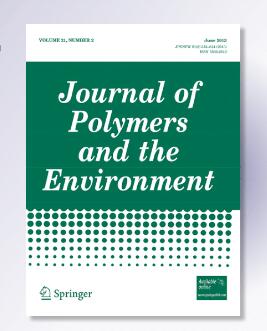Nanocomposites Prepared in Supercritical Carbon Dioxide from Epoxidized Soybean Oil, Citric Acid, and Cellulose Nanofibers
Abstract
There is increasing interest in using green and sustainable materials as replacements for petroleum-based polymeric materials. Plant oils are of particular interest as raw materials for the synthesis of new polymers for different applications. In this work, we have made novel green nanocomposites comprising epoxidized soybean oil (ESO), citric acid (CA), and cellulose nanofibrils (CNF) using supercritical carbon dioxide, without a catalyst or an accelerator. Both polymeric foamed products and bubble-free products could be obtained. The chemical structure of the new products was studied by solid-state and solution-state nuclear magnetic resonance (NMR), together with dynamic mechanical properties and glass transition temperature (Tg). The product was found to contain low-molecular-weight polymers of ESO involving tetrahydrofuran structures in the polymer backbone and ester crosslinks between ESO and CA. The incorporation of nanocellulose was found to increase the Tg and the storage modulus (G’) of the products. The G’ at 25 °C ranged from 0.08 MPa to 0.63 MPa with CNF loading from 0.00 g to 0.24 g. The Tg measured by dynamic measurement ranged from 6.41 °C to 11.07 °C. Effect of CO2 pressure on the dynamic mechanical properties and Tg showed that the G’ at 25 °C ranged from 0.10 MPa to 0.14 MPa when the pressure changed from 55.2 bar to 75.8 bar, while the Tg changed from 6.70 °C to 7.28 °C under these conditions. With the aids of gel contents, TGA and FTIR results, the formation of crosslinked nanocomposites would be confirmed.


 求助内容:
求助内容: 应助结果提醒方式:
应助结果提醒方式:


